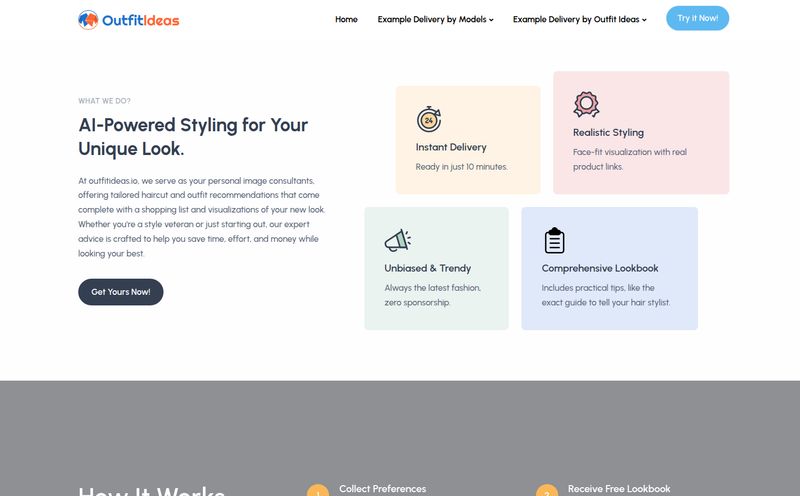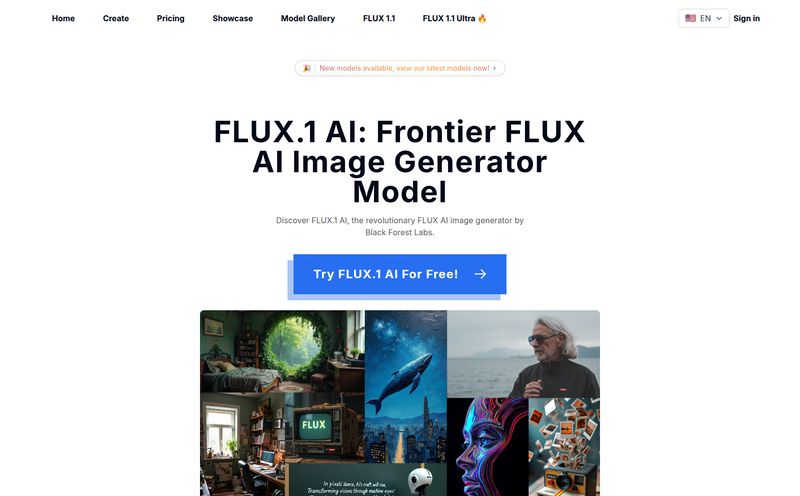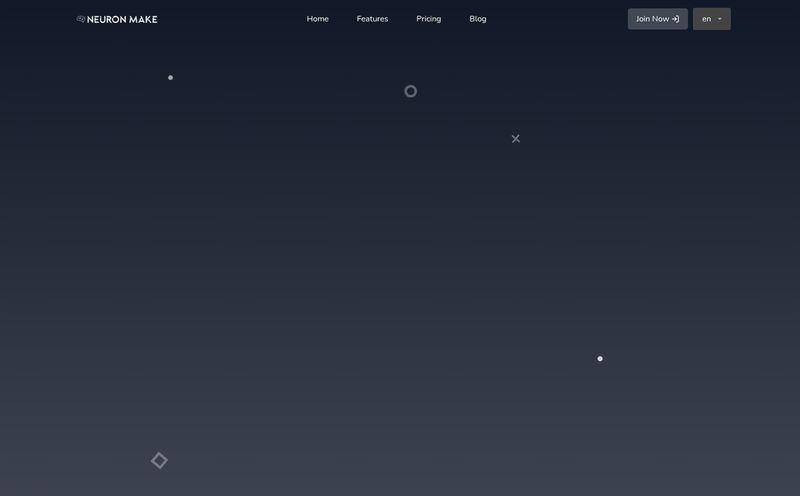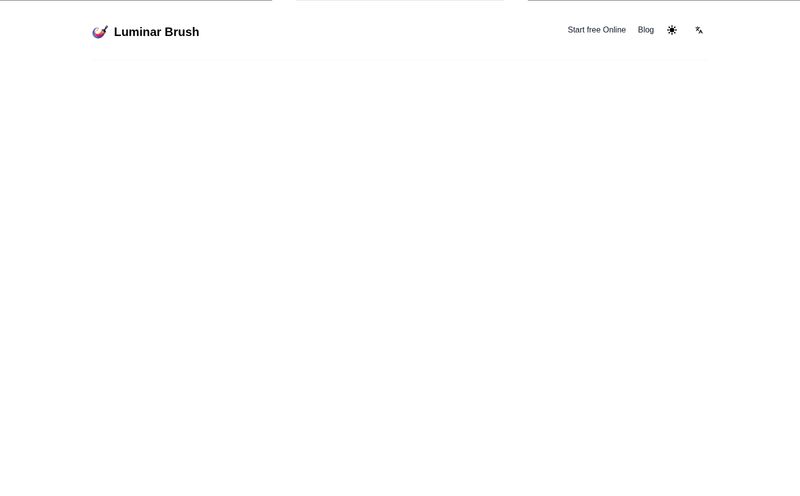I’ve been in the SEO and traffic game for years, and if there’s one thing I’ve learned, it’s that speed is everything. Page load speed, content velocity, trend adoption... you snooze, you lose. So when the AI art wave hit, I was fascinated. But I quickly hit a wall that felt all too familiar: the agonizingly slow pace of training a custom AI model.
You know the drill. You meticulously gather your images, upload your dataset, configure the settings, hit 'Go,' and then... you wait. And you wait. You go make coffee, you answer a week's worth of emails, you contemplate the very nature of time itself, and maybe, just maybe, your model is ready. It felt like rendering a video on a dial-up modem. That’s why when I stumbled across dreamlook.ai and its audacious claim to “Finetune Stable Diffusion in Minutes,” my cynical blogger-brain immediately perked up. Minutes? Really? I had to see this for myself.
So, What Exactly is Dreamlook.ai?
Let's get one thing straight. This isn't just another prompt-and-pray image generator. There are a million of those. Dreamlook.ai is a specialized tool, a high-performance engine for creating your own custom Stable Diffusion models. Think of it less like a camera and more like a professional-grade darkroom where you can develop your own unique photographic styles.
It’s built around Dreambooth, the technique that lets you inject a specific subject (like your face, your dog, or a product) or a particular style into a base model. And it does this with a focus on two things: blistering speed and scalability. Whether you’re a solo artist tired of waiting or a developer needing a robust API to handle thousands of training runs, this platform is aimed squarely at you.
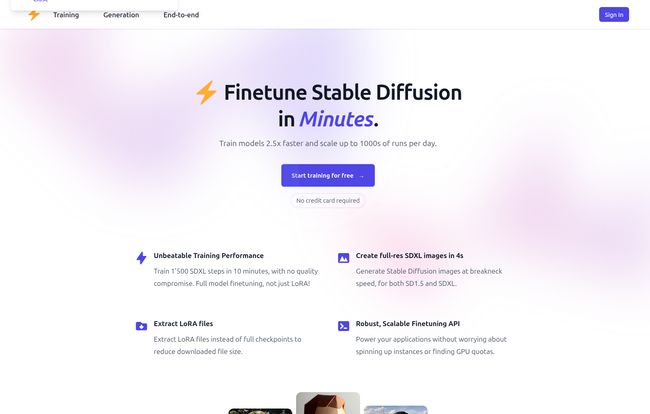
Visit dreamlook.ai
The Standout Features That Caught My Eye
Okay, so it's fast. But what else is under the hood? A lot, it turns out. Some of it is standard fare, but a few things are genuine game-changers in my book.
Unbelievable Training Speeds
This is their headline act, and it doesn’t disappoint. Training a standard SD1.5 model can be done in the time it takes to, well, actually drink that coffee you made. Even the more demanding, higher-quality SDXL models are impressively quick. For anyone who values their time (and sanity), this alone is a massive win. We're talking about compressing a multi-hour process into a handful of minutes. It completely changes the creative workflow from 'plan and wait' to 'tinker and iterate'.
Full SDXL Support and LoRA Extraction
The AI world is moving to SDXL, and Dreamlook is right there with it. But what really got me excited was the ability to extract LoRA (Low-Rank Adaptation) files. This is a bit of a power-user feature, but it's huge. Instead of a clunky, multi-gigabyte checkpoint file, you get a small, nimble LoRA file that you can easily share or load into other interfaces like AUTOMATIC1111. It's like getting the full engine tune-up, but also a portable supercharger you can slap onto other cars. It offers incredible flexibility.
A Real, Scalable Finetuning API
While I spent most of my time in the user-friendly web UI, I have to give a nod to their API. This is what separates the toys from the tools. For businesses or app developers looking to integrate custom model creation into their own products, having a robust and scalable Dreambooth API is critical. You can see they've built this for serious, high-volume work, not just casual experimentation.
Let’s Talk About The Money: Dreamlook.ai Pricing
Alright, this is where it gets a little more complex, but in a good way. Dreamlook.ai uses a dual system of pay-as-you-go tokens and monthly subscriptions. It's smart because it caters to different types of users.
Pay-As-You-Go Token Packs
If you're an occasional user or just want to test the waters, this is your route. You buy a bundle of tokens and use them as needed for training and generation. The cool part? The more you buy, the cheaper each token gets. It’s a pretty straightforward system.
| Price | Tokens | Cost per Token | Potential Output |
|---|---|---|---|
| $15 | 150 | $0.100 | ~15 SD1.5 trainings / ~3 SDXL trainings |
| $60 | 700 | $0.086 | ~70 SD1.5 trainings / ~17 SDXL trainings |
| $100 | 1,200 | $0.083 | ~120 SD1.5 trainings / ~30 SDXL trainings |
| $750 | 10,000 | $0.075 | ~1,000 SD1.5 trainings / ~250 SDXL trainings |
Monthly Subscriptions for Serious Users
If you find yourself training models regularly, a subscription is where the real value is. You get a monthly allotment of tokens, often at a better rate, plus you unlock premium features. Things like ControlNet support (a must for precise compositions), higher concurrent job limits, and longer storage duration for your trained models. I personally think anyone serious about this will gravitate towards a subscription pretty fast.
| Plan | Monthly Cost | What You Get |
|---|---|---|
| No Plan | $0 | 50 tokens on signup to try it out |
| Enthusiast | $19 | 100 tokens/month, ControlNet support |
| Pro | $199 | 1,000 tokens/month, higher priority queue |
| Enterprise | $4,999 | 10k tokens/month, dedicated capacity |
The Good, The Bad, and The Token-Based
No tool is perfect, right? After spending a good amount of time with Dreamlook, here’s my honest take. The things I absolutely loved were the obvious ones: the speed is genuinely disruptive and the quality of the final images is top-notch. Getting 50 free tokens just for signing up is a classy move that lets you do a proper test run without pulling out your credit card. And the LoRA extraction is, for me, a killer feature that adds so much versatility.
On the flip side, there are a couple of things to be mindful of. The token-based pricing, while flexible, does require a bit of mental gymnastics. You're always conscious of how many tokens a training run or an image batch costs. It’s not a huge deal, but it's different from a simple flat-rate 'all you can eat' plan. Also, the model storage duration on the free and lower tiers is pretty short (48 hours on the free plan). You have to be on the ball about downloading your models, especially those precious LoRAs, before they disappear. It’s a fair trade-off for the speed and low entry cost, but something to remember.
Frequently Asked Questions
Can I use models from Dreamlook.ai in AUTOMATIC1111?
Absolutely! This is one of its best features. You can train a model on Dreamlook and then extract the LoRA file. That small file can be easily downloaded and used in local installations of Stable Diffusion interfaces like AUTOMATIC1111 or ComfyUI.
How many images do I need for a good training?
This is the classic 'it depends' question. For a person's face, you can get surprisingly good results with as few as 10-15 high-quality, varied photos. For a style, you might want a bit more, say 20-50 images. The key is quality and variety over sheer quantity.
What's the difference between SD1.5 and SDXL training?
Think of SDXL as the newer, more powerful version. It understands prompts better, produces higher-resolution images (1024x1024 native), and is generally more coherent. It costs more tokens to train and generate with, but the results are often visibly superior to the older SD1.5.
Is it better for training faces or artistic styles?
It's excellent for both. Dreambooth was originally famous for its ability to learn specific faces or objects ('person_xyz' or 'dog_abc'), and Dreamlook handles this flawlessly. It's also incredibly effective for training on an artistic style to create a consistent look and feel across many images.
Is there a free trial?
Yes, in a way. When you sign up for a new account, you get 50 free tokens. This is enough to do a few SD1.5 training runs or one SDXL run, plus generate a bunch of images. It's a proper trial that lets you test the core functionality.
My Final Verdict on Dreamlook.ai
So, is dreamlook.ai worth it? For the right person, 100% yes. If you are a casual user who just wants to type a funny prompt and see what comes out, this probably isn't the tool for you. Stick to the mainstream generators.
But. If you are an artist looking to develop a unique AI style, a developer who needs a powerful backend for an application, or a serious hobbyist who is tired of waiting for models to train, Dreamlook.ai is a revelation. The speed isn't just a convenience; it fundamentally changes how you can interact and create with this technology. It makes rapid iteration possible.
In a space that moves at a dizzying pace, dreamlook.ai feels like it's setting the tempo. For me, the ability to go from an idea to a fully trained, high-quality custom model in under 10 minutes is, without a doubt, a game-changer. I think I've found my new go-to for custom model training.
